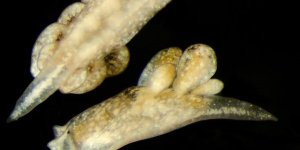| News / Science News |
Antarctic seals may use Earth's magnetic field to navigate while hunting
NSF | DECEMBER 27, 2014
Weddell seals have biological adaptations that allow them to dive deep--as much as of hundreds of meters--while hunting, but also an uncanny ability to find the breathing holes they need on the surface of the ice. Now, researchers believe they have figured out how they do it--by using the Earth's magnetic field as a natural GPS.
The question of how seals navigate is more than academic. It's about life and death for the animals, which like all mammals, require oxygen to breathe, despite their mostly aquatic environment. Time spent looking for a new place to surface after each dive would not only be inefficient given the energy required to swim and hunt, but failure to locate a hole in the ice means the animal would drown.
The animal always found its way back. It's like he knew exactly where the hole was.
Magnetic sense isn't the only sense that seals use for orientation. Another sense that may be in place is hearing. Seals may be receiving acoustic cues on where breathing holes are located from other Weddells.
YOU MAY ALSO LIKE




